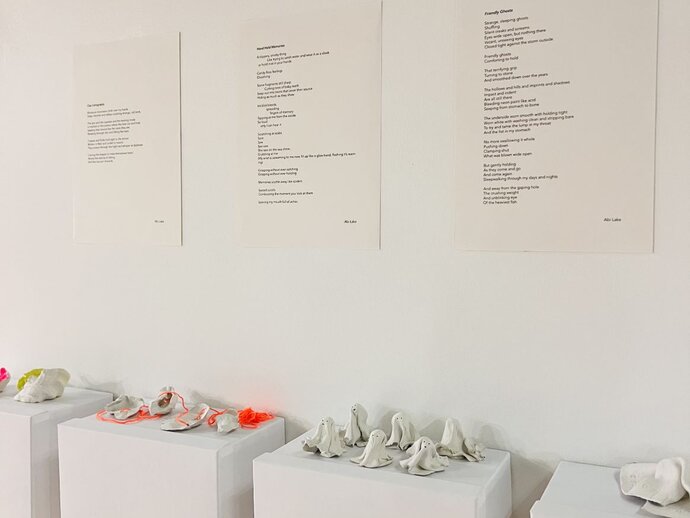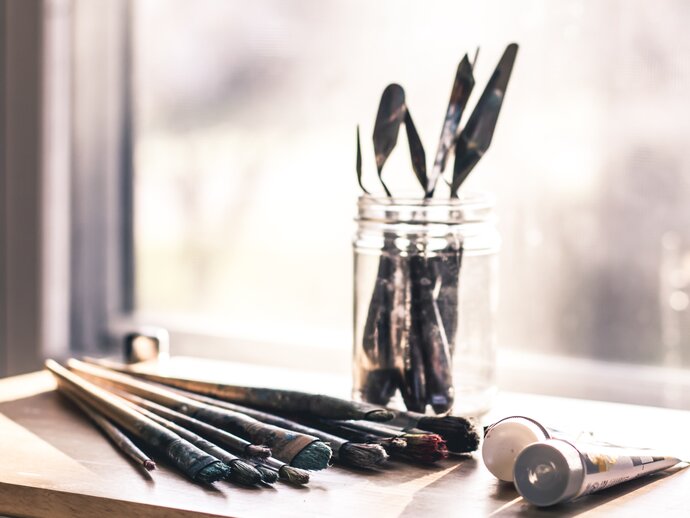Impact in Qualitative Research: Sian Oram on creative workshops with coercive control survivors
Dr Sian Oram is a Reader in Women’s Mental Health at King’s College London, and the Director of the Violence Abuse and Mental Health Network. She has an interest in developing methods for safe, ethical, and participatory research with and by people affected by trauma and abuse. In this blog post, Sian reflects on a lived experience-led creative workshop, held at King’s College London in January 2024, to explore coercive control.
The Violence Abuse and Mental Health Network (VAMHN) recently held a one-day lived experience-led creative workshop on coercive control. At the VAMHN we work to understand, prevent, and reduce the impact of violence and abuse on mental health. This means bringing together experts with different ways of thinking about violence, abuse, and mental health, including people with lived experience, practice-based experience, research-based experience, or with multiple types of experience.
Coercive control is pattern of actions where one person aims to dominate another, systematically eroding their autonomy and freedom. It is increasingly recognised that coercive control is a common form of domestic abuse and has severe risks to mental health and wellbeing. But so far there has been limited work to understand victim and survivor perspectives on this form of abuse.
We focused the workshop on three themes previously identified by survivors as priority areas in future coercive control research and advocacy – “understanding coercive control”, “justice for survivors of coercive control”, and “recovery” - participants engaged in a series of interactive activities designed to foster reflection, expression, and healing. It served as a dynamic space for survivors to come together as artists to share their understandings and perspectives on coercive control and to cocreate outputs to share their reflections.
Workshop Activities
The workshops began with a roundtable discussion that laid the foundation for a series of arts-based sessions focused on zine-making, stained glass painting, poetry, and crochet.
- Roundtable: During the roundtable, participants critically reflected on the themes of understanding and justice, both individually and as a collective, drawing on their lived experience, research, and practice. Participants were encouraged to share their thoughts and experiences on sticky notes, which were gathered and posted on a wall or board for the broader group to read and engage with. The participants then discussed the ideas that had been shared, explored common themes, asked questions, and shared insights. This interactive and visual approach meant that, all voices could be heard, and a wide range of perspectives considered. By engaging in this collaborative process, the group was able to gain a deeper understanding of the themes from multiple points of view and identify areas for further exploration in the arts-based sessions and beyond. Findings have been summarised in a series of visual concept maps that will guide future research and learning.
- Zine-making: Led by Lisa Ward, participants created personalised works which articulated their experiences of coercive control. Zines are DIY booklets or pamphlets which have a long history as a tool for self-expression and resistance. They offer a platform of voices that are often overlooked or excluded from mainstream media. During the workshop, Lisa shared this history and some classic zine-making techniques such as collage with a range of magazines and art materials. Provided with these tools and materials, participants were encouraged to explore their creativity and express their thoughts and experiences through this hands-on, interactive process. What resulted was a series of meaningful and personalized works of art that reflected participants’ unique perspectives and voices.
- Glass painting: Facilitated by Sharli Paphitis, in the glass painting workshop participants used stained glass – a symbol of beauty, fragility, and transformation – to express their thoughts about coercive control and the justice system. Sharli helped participants to choose stained glass panels, design an image that reflected their thoughts about the coercive control and the justice system, and paint this image onto their glass panel. Each painted piece holds its own meanings; brought together into a collaborative piece they become a multi-layered expression of vulnerability, struggle, strength, and resilience.
- Poetry and crochet: Under the guidance of Ariel Collier, participants were invited to focus on healing and recovery. The session started with participants coming together to collectively author a poem. Each person contributed a line, drawing on their own experiences, processes, and tools for care and coping. As participants edited the lines together, reading and rereading the piece aloud, a collective tapestry of shared strength emerged. Finally, the workshop transitioned into crochet – a tactile, almost meditative activity in which hands and minds came together to channel emotions and promote self-regulation. Individual crochet pieces have been stitched together, symbolising the interconnectedness of shared experiences and the collective journey taken towards healing.
What was the impact of the workshop?
This lived experience-led workshop offered survivors of coercive control a safe and supportive space to explore complex and difficult topics, connect with others, and harness the power of self-expression and creativity for healing and self-discovery.
As we prepare to showcase these works in a series of exhibitions, we hope to make a difference by sharing the experiences of workshop participants with the wider public. Through this connection, we aim to change how people see things, prompt them to question what they thought they knew, and inspire everyone to act to help stop this type of abuse.
For more information about or to join the Violence Abuse and Mental Health Network and receive our monthly newsletter, visit www.vamhn.co.uk. You can follow us on X at @vamhn.


